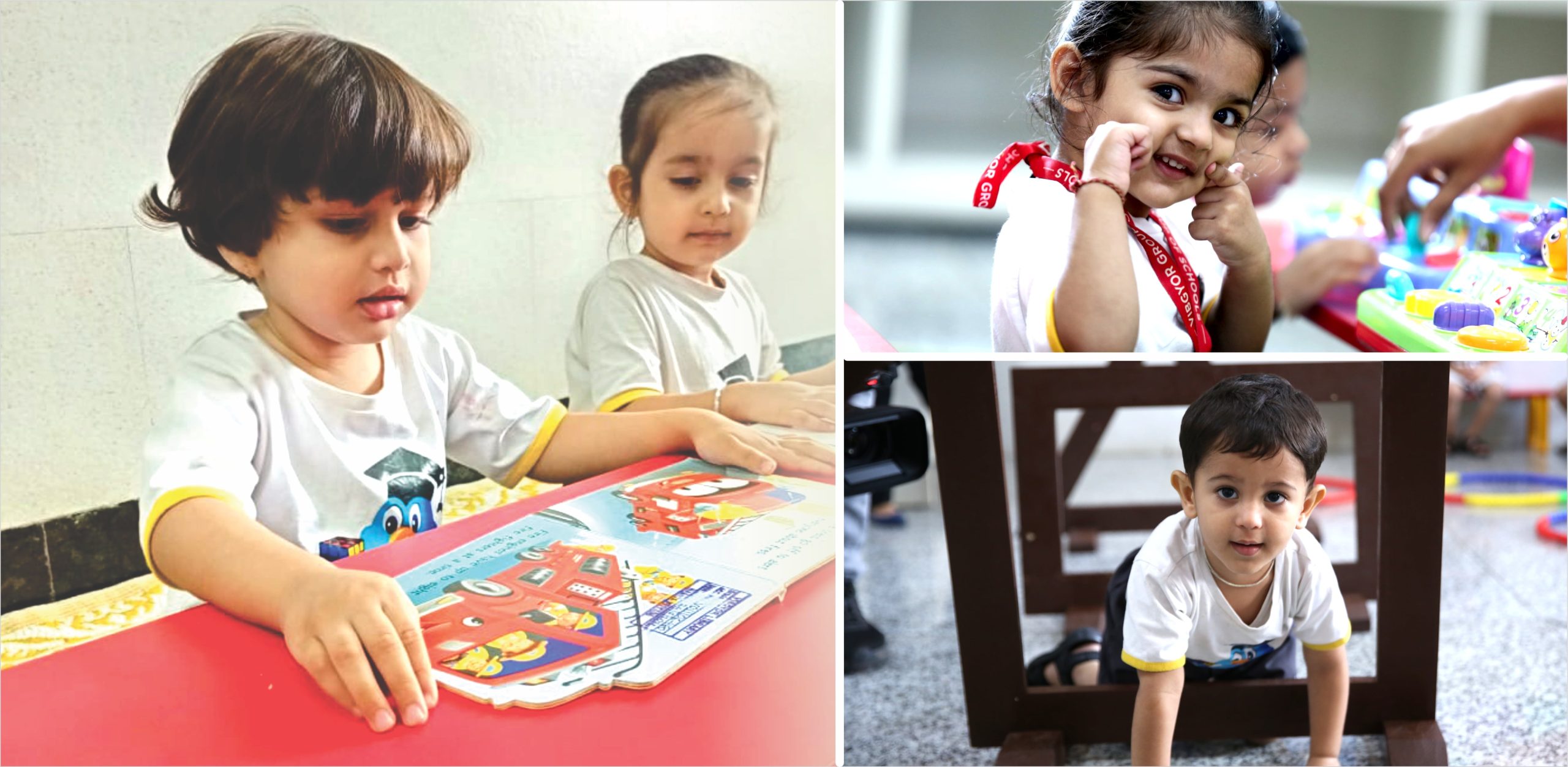![]()
From the moment they step into a classroom, children are pushed into a world where grades often determine their worth. But, the lines have blurred and education is going beyond academics. Textbook learning is crucial, but it is just one piece of the puzzle. Creative and cognitive abilities and personality-based skills complete this puzzle.
In fact, the National Education Policy 2020 highlighted the integration of life skills in school curricula at all levels, opening the doors to a more progressive educational framework.
While this move has brought about an educational revolution, it has also been instrumental in:
- Exploring new avenues of creative growth
Hobbies like origami, chocolate-making, beatboxing, and t-shirt designing present new pathways for self-expression. Origami fosters precision, patience, and fine motor skills, whereas beatboxing develops rhythm and coordination in children. With chocolate-making enhancing culinary skills and t-shirt designing cultivating colour theories, kids experiment with flavours, colours, and more.
- Mastering the art of personality-based skills
In a world that demands individuality and innovation, dancing, coding, or acting are no longer viewed as passion projects. Rise in personality-based competitions like talent shows helps children build confidence, hone their stage presence, improve their public speaking skills, and boost their ability to think independently.
As someone rightly stated, “Do what you love, and you will never work a day in your life.”
Take Mark Zuckerberg for example, who started a small social media website that ultimately became Facebook, a multi-billion-dollar company. Or Bill Gates, who was all set on becoming a lawyer. But his passion for computers took over, and as they say, the rest is all history, and Microsoft came into being.
Imagine, if these masterminds hadn’t given their passion a chance and had gone with the flow.
- Harnessing the power of cognitive abilities
Creative and personality-based skills are vital, but cognitive abilities drive learning and development forward. From critical thinking and problem-solving to memory and attention to detail – these abilities give kids the confidence to analyse information, question assumptions, and apply the knowledge to real-world situations.
- Providing a winning edge through sports
Adding sports to the mix gives your child holistic growth. Did you know that the World Health Organization (WHO) suggests an average of 60 minutes of physical activity for 5-17-year-olds?
Letting your child pursue sports like football, handball, and cricket is instrumental in helping them collaborate. Athletics can help push their physical limits, whereas activities like swimming and skating improve stability and judo enhances their self-control.
We believe that every child has a unique perspective and potential that just needs to be discovered. They have what it takes to be inspiring geniuses. Correct guidance and a blend of academic prowess and skill-based learning can make all the difference.
And, what better way to build a generation that leads with their minds and hearts than with one of the most enigmatic inter-school festivals?
VIBGYOR Viva: Presenting the best of both worlds
For the last 16 years, VIBGYOR Viva has been a jubilant celebration of talent, diversity, and excellence in arts and sports. Not just a cultural hub for the world’s most dynamic, motivated, and enthusiastic students, this platform also invites the whole family to relive their childhood through their little one’s eyes.
Featuring an array of events, competitions, and workshops, our annual inter-school festival offers your child countless opportunities to shine. A launchpad unlike any other, it brings the most promising minds to build crucial abilities and leave an indelible mark in the world. Through the Viva movement, we also strive to foster a strong cultural quotient among our students.
With this aim, the event has witnessed an impressive performance from over 2,00,000 lakh students across the globe.
Unleashing the potential of our rising stars
Our competitions are more than just contests; they are experiences that students cherish. Amidst the friendly competition vibes, lifelong friendships are forged, and invaluable lessons are learned.
Viva 16’s The Stars Ensemble is set to be a unified platform that goes beyond specific categories. This approach allows us to offer opportunities to a wide variety of performers, including dancers, singers, musicians, beatboxers, rappers, poets, impressionists, theatre artists, magicians, stand-up comics, artists, and anyone else with unique skills or performances that can enrich the vibrant tapestry of Viva 16.
As the spotlight shines on our students, it is not just about winning anymore; it is about their ambition that goes beyond the competition itself. We believe that, with the right encouragement and opportunity, your child can find their wings and soar higher. VIBGYOR Viva gives your little one those wings along with the strength and the platform they need to go out there and conquer the world.
Know more about VIBGYOR Viva by reading our other blogs: Interactive VIBGYOR Viva Workshops Learning Beyond Textbooks and VIBGYOR Viva 16: Celebrating Talent and Creativity and Breaking Boundaries: Celebrating Diversity at VIBGYOR Viva.


